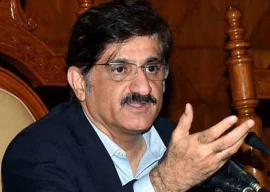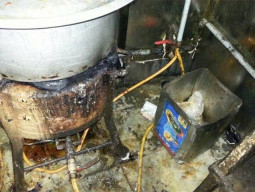
The 346-page plan for the next five years has been developed by the provincial education department's Reform Support Unit (RSU), with input from the Global Partnership for Education, the United Nations Children's Fund and the European Union.
"The Sindh government's [actual] spending on education amounts to nearly one-fifth of its total budgetary outlay, but there is a general consensus that the public education system is underperforming," states the SESP document, a copy of which was made available to The Express Tribune, affirming the state of education in the province before going on to delineate a roadmap for improvements.
The SESP unequivocally states that the provincial government has been suffering from issues of planning, development and implementation of its various policies, plans and strategies.
While identifying the lack of good governance as one of the principal reasons for poor performance in education indicators, the document said that proper public financing was the first step towards improvement.
Anomalies in the education budget
The plan points out that although Sindh's overall education budget has grown by 128 per cent over the past six years, the lion's share of this goes to the recurrent component, which has grown by 148 per cent from Rs54.2 billion to Rs134.3 billion.
In comparison, the allocation for educational development has increased by a mere 59 per cent, from Rs9.4 billion to Rs15 billion.
The disparity between these two elements of the education budget is, however, starkly inconsistent with the provincial government's overall budget allocations in the same time period. The overall recurrent component has grown by 104 per cent from Rs213.3 billion to Rs436 billion, while the development component has seen anincrease of 120 per cent from Rs97.9 billion to 215.3 billion.
The plan proposes to substantially increase the development component of the education budget in order tomeet the educational sector's requirements in the coming years.

SOURCE: ANNUAL FINANCE AND APPROPRIATION ACCOUNTS, AG SINDH (BASED ON BUDGET ESTIMATES)
"The distribution of the total education expenditure between the recurrent and development budgets must be rationalised on the basis of the development needs of the education sector," says the document. "The allocation to the education evelopment budget has ranged between 5.3 per cent and 11.6 per cent of the total provincial development budget over the past five years, falling far below the sector's requirements." What the SESP simultaneously proposes is restraining the rapid growth of the salary component of the recurrent expenditure. The salaries of the teaching and non-teaching staff have amounted to around 79.5 per cent of the total education recurrent expenditure over the past six years, increasing by 189 per cent as compared to a growth of 71 per cent in the non-salary part of the expenditure.
"The share of non-salary expenditure in the recurring budget is very low and is insufficient to allow for the adequate provision of basic facilities and maintenance costs at the school," points out the document.
An even more alarming trend in the education sector has been the actual utilization of the budgeted amounts - an average of merely 77.5 per cent of the education budget has been used since 2007.

SOURCE: ANNUAL FINANCE AND APPROPRIATION ACCOUNTS, AG SINDH (BASED ON BUDGET AND REVISED ESTIMATES)
In other words, a cumulative amount of Rs138.7 billion that was earmarked for education over the past seven years has never actually been utilised.
The RSU officials find this underutilisation reflective of systemic weaknesses in budget estimation, delayed releases of funds by the provincial finance department and capacity failures within the Sindh education department.
Published in The Express Tribune, September 29th, 2014.
COMMENTS (1)
Comments are moderated and generally will be posted if they are on-topic and not abusive.
For more information, please see our Comments FAQ



1732626034-0/BeFunky-collage-(92)1732626034-0-165x106.webp)













I want to share the essues of shp